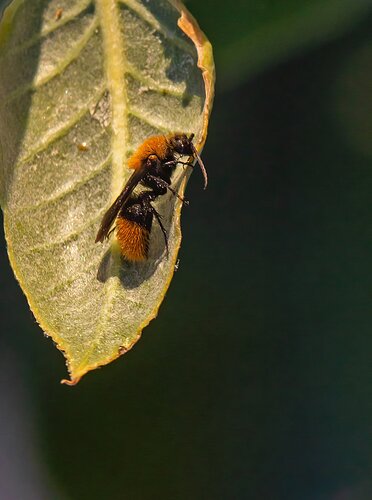Dasymutilla Californica
Critique Style Requested: Standard
The photographer is looking for generalized feedback about the aesthetic and technical qualities of their image.
Description
This is a male velvet ant (and a tiny cousin) on a sunflower stem. Velvet ants are dimorphic, meaning the males have wings and the females do not. It is safe, and fun to pet male velvet ants, and they squeak when you do. It is not safe and not fun to pet female velvet ants as their sting is about as long as their body and can wrap clear under their body and sting you over their back. Their sting is said to be about four times as strong as a bee, and they have the nickname “cowkiller” in the Southern U.S.
This is the group my son has done a lot of research with and why we travel to the Southwestern deserts in California, Arizona, and other sand states in the dead heat of August and September. They are active for six to eight months, but most active after the monsoon season in the Southwest Desert. The females, as with tarantula hawks will sting their host insects to paralyze them, then lay an egg in the host, and the larvae will feed on the still living paralyzed host until it matures and becomes an adult. The hosts of choice? Bees and other wasps of course! The diurnal (daytime) velvet ants are usually brightly colored with lots of fuzzy hair in various patterns. The nocturnal (nighttime) species are usually dull colored.
Specific Feedback
All suggestions or recommendations are appreciated.
Technical Details
canon 5dMiii, f18, 1/125 sec, iso 640, 100 mm macro, diffused flash


